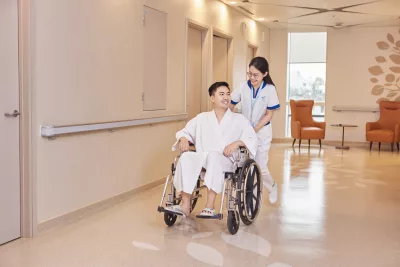What Is Considered Delayed Walking in Children?
A child is considered to have delayed walking if they are 18 months old and still unable to walk steadily without assistance.
Walking requires strong bones, a well-developed nervous system, and proper muscle function. Typically, children start learning to walk between 12 and 14 months of age. However, this range can vary depending on each child’s individual development, usually from 10 to 18 months. If a child is unable to walk independently after this period, they may be considered delayed in walking.
What Causes Delayed Walking?
Several factors may contribute to delays in a child’s motor development, including prematurity, congenital factors, bone and muscle disorders, neurological issues, or overall health conditions.
Prematurity
One of the most common causes of delayed walking is premature birth. Premature babies are born before full-term development is complete. Their organ systems may not be fully matured, resulting in weaker muscle tone and poorer balance, making it harder for them to walk compared to full-term babies.
However, not all premature infants will experience walking delays – it depends on the degree of prematurity and gestational age at birth.
Congenital traits
Some children may have delayed walking due to inherited traits unrelated to health conditions. If one or both parents experienced late walking in early childhood, their child may also exhibit similar delays, often due to personality factors like shyness or fear of falling.
These children still reach other developmental milestones, just later than peers.
Musculoskeletal and muscular issues
In some rare cases, children may show delayed development in basic motor skills such as walking or grasping objects due to muscle or skeletal conditions. These include muscular dystrophy, skeletal malformations, joint abnormalities, or neuromuscular diseases like muscle atrophy.
Neurological conditions
Brain-related conditions, such as cerebral palsy, can significantly affect motor control and walking ability. Causes of cerebral palsy vary and may include prenatal brain abnormalities, chromosomal syndromes (e.g., Down, Tay-Sachs, Prader-Willi, Williams), or birth trauma (e.g., forceps delivery).
Other neurological disorders such as meningitis, encephalitis, epilepsy, or hydrocephalus can impair motor function and prevent children from learning to walk.
Internal organ disorders
Conditions like congenital heart defects, brittle bone disease (osteogenesis imperfecta), or liver disease may weaken the child’s body. Even if the nervous system is unaffected, such diseases can reduce muscle strength and stamina, making walking difficult.
Child’s personality
Every child is different. Some are naturally active, while others prefer to sit or lie quietly. Certain children may have the physical ability to walk but show no interest in doing so, preferring solitary play. This can lead to misinterpretation as delayed development.
Parental care style
Children who are overly protected or hospitalized for long periods may not get enough physical activity to develop walking skills. Overweight children also face challenges in movement and balance due to weaker muscle strength.
Additionally, poor nutrition or deficiencies in vitamin D and calcium can lead to weak bones and muscles, contributing to delayed walking.
Signs That May Indicate Delayed Walking
Although walking is considered delayed at 18 months, parents should watch for earlier signs of developmental issues, such as:
- By 4 months – Child cannot roll over or lift and turn their head
- By 6 months – Child cannot grasp or reach for toys
- By 12 months – Child cannot sit or stand without assistance
If any of these signs are present, it’s important to consult a pediatrician for evaluation.
How to Support a Child with Delayed Walking
Parents can encourage motor development in the following ways:
Ensure proper nutrition
Provide essential nutrients such as iron, calcium, vitamin D, and other minerals. A balanced diet helps build strong bones and muscles.
Daily physical exercises
Simple hand and leg stretches for 3 to 5 repetitions a day which helps stimulate blood circulation and muscle response. These exercises support leg development and prepare the child for walking.
Encourage physical activity
Use toys that attract the child’s attention or make sound to encourage movement. Place objects slightly out of reach to motivate crawling or reaching.
Avoid placing toys too far away, as it may discourage the child. Offer praise and encourage progress gradually.
Final Notes and Recommendations
These tips may help overcome delayed walking, but if your child shows consistent developmental delays, consult a healthcare provider for accurate diagnosis and personalized treatment.
Healthy development is every parent’s wish. While delays in walking or speech can be concerning, early monitoring and care are critical. Prenatal check-ups are important for safeguarding both maternal and fetal health.
Families can consider the Maternity Program at Hanoi French Hospital, which offers a well-structured care plan throughout pregnancy, delivery, and postpartum. The program is led by experienced obstetricians and ensures safe, closely monitored care.
Disclaimer: This article is for informational purposes only and does not replace medical diagnosis or professional advice. Always consult a reputable healthcare provider and follow your doctor’s recommendations for safe and effective care. Delayed walking may stem from various causes, from personality traits to medical conditions. Early detection and timely intervention are key to supporting your child’s healthy development. Contact a pediatric specialist for further guidance and care.








